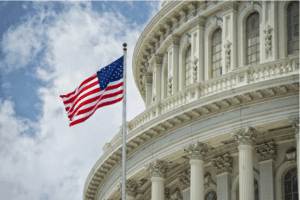
We’d love to help you analyze your expenses, optimize your pricing strategy, and unlock your business’s full potential. Let’s build a smarter, more profitable future Retail Accounting for your business together. This means you need to sell at least 1,364 cupcakes monthly to cover your costs.
Balancing Fixed and Variable Costs for Healthy Cash Flow
For example, if you are considering expanding your business, you need to know how much it will cost you to produce and sell additional products or services. Your fixed costs include $2,000 monthly rent and $1,000 for equipment leasing. Your variable costs include $0.50 for ingredients per cupcake and $0.30 for packaging. If you sell a cupcake for $3, your profit per cupcake before fixed costs is $2.20. The difference between fixed and variable costs is that fixed costs do not change with activity volumes, while variable costs are closely linked to activity volumes. Thus, fixed costs are incurred over a period of time, while variable costs are incurred as units are sold.

What Are Variable Costs?
A common variable cost situation is a warehouse full of finished goods; these items are not charged to expense until they are sold to a customer. You can calculate the variable cost for a product by dividing the total variable expenses by the number of units for sale. To determine the fixed cost per unit, divide the total fixed cost by the number of units for sale.
- The calculation determines the cost of production for one more unit of the good.
- Variable costs are flexible, so analyze spending patterns and identify areas to save.
- Understanding the difference between fixed costs and variable expenses is important for making rational decisions about business expenses which have a direct impact on profitability.
- Fixed costs remain constant regardless of production or sales volume.
- To know more about such interesting concepts, stay tuned to BYJU’S.
Fixed Cost vs. Variable Cost

Most typically, variable costs increase and decrease with business performance (sales, more specifically). In this article, we’ll provide definitions fixed vs variable costs for both fixed and variable costs, and describe some common examples of each. You’ll also learn how these two types of expenses impact your financial projections and reporting.
- Budgeting with goals in mind helps you stay motivated and on track.
- Fixed costs are a significant factor in determining your break-even point—the sales level at which your total revenue equals total costs.
- Flexibility helps prevent overspending without stressing over small changes.
- Examples of fixed costs include rent, salaries of permanent employees, insurance premiums, and property taxes.
- To turn a profit at $6 a unit, we’d need to sell 25,000 units instead of 10,000 at $12 each.
- Understanding these costs allows you to set realistic pricing and sales goals.
Table of fixed and variable costs and differences
- Understanding how costs can change with fluctuations in volume and output levels can help refine your overall business strategy.
- Understanding your fixed and variable costs offers several benefits for your business.
- Fixed costs are regular, consistent expenses that do not change with the level of production or business activity.
- Knowing the difference between the two helps businesses predict cash flow, determine pricing strategies, and manage expenses effectively.
- Raw materials, for example, are a kind of variable cost that companies who produce a physical product will be familiar with.
A company with greater fixed costs compared to variable costs may achieve higher margins as production increases since revenues increase but the costs will not. Fixed costs are the expenses that are independent of the volume of production. They don’t change much, even if the company produces more or less. These costs remain constant over a specific period, like a month or a year. Managing costs effectively is crucial for any business aiming for profitability and growth. Two primary categories of costs that every business must understand are fixed costs and variable costs.

Startups have a number of fixed costs, especially those with physical locations (as opposed to fully remote companies). These expenses stay the same each unearned revenue week, month, quarter, or year, regardless of how your business performs. This is the hardest area for people to control spending, so look at using cash or another way to track these variable expenses. Sticking to these limits leaves more room for savings and essential costs. Rent, insurance, and loan payments need to be covered before spending on things like eating out or shopping.
